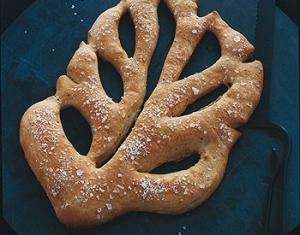tags (edit): Christmas Advance @Vogel @Try Soon! Bread
tags (edit): Christmas Advance @Vogel @Try Soon! Bread
|
If you want dramatic impact on your holiday table, look no further. These leaf-shaped breads (traditionally one of the 13 desserts of a Provencal Christmas Eve) are large and sculptural, with a heady fragrance of orange and anise. Ingredients
STARTER |
 |
Instructions

|
Cuisine: |
Main Ingredient: |